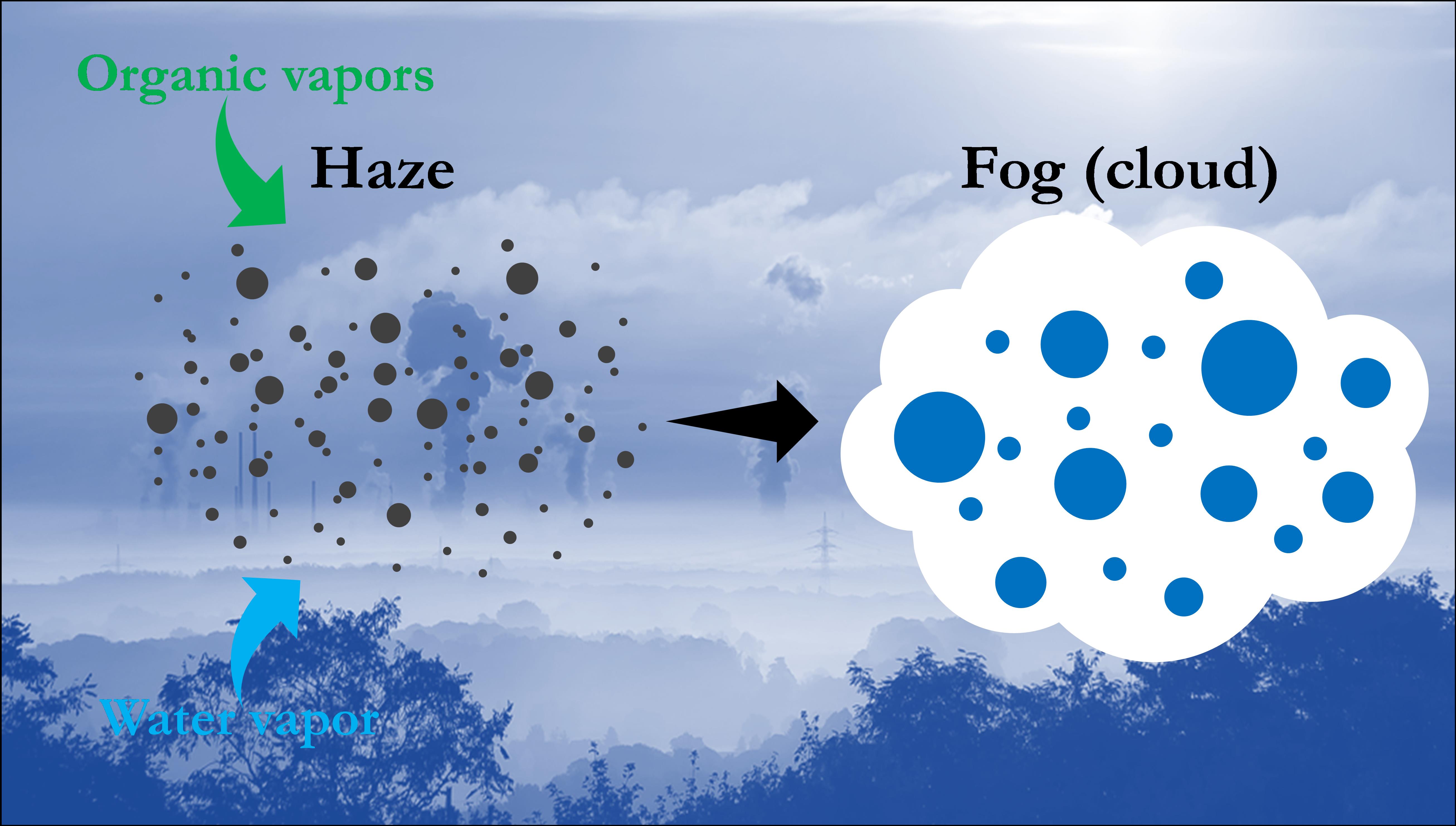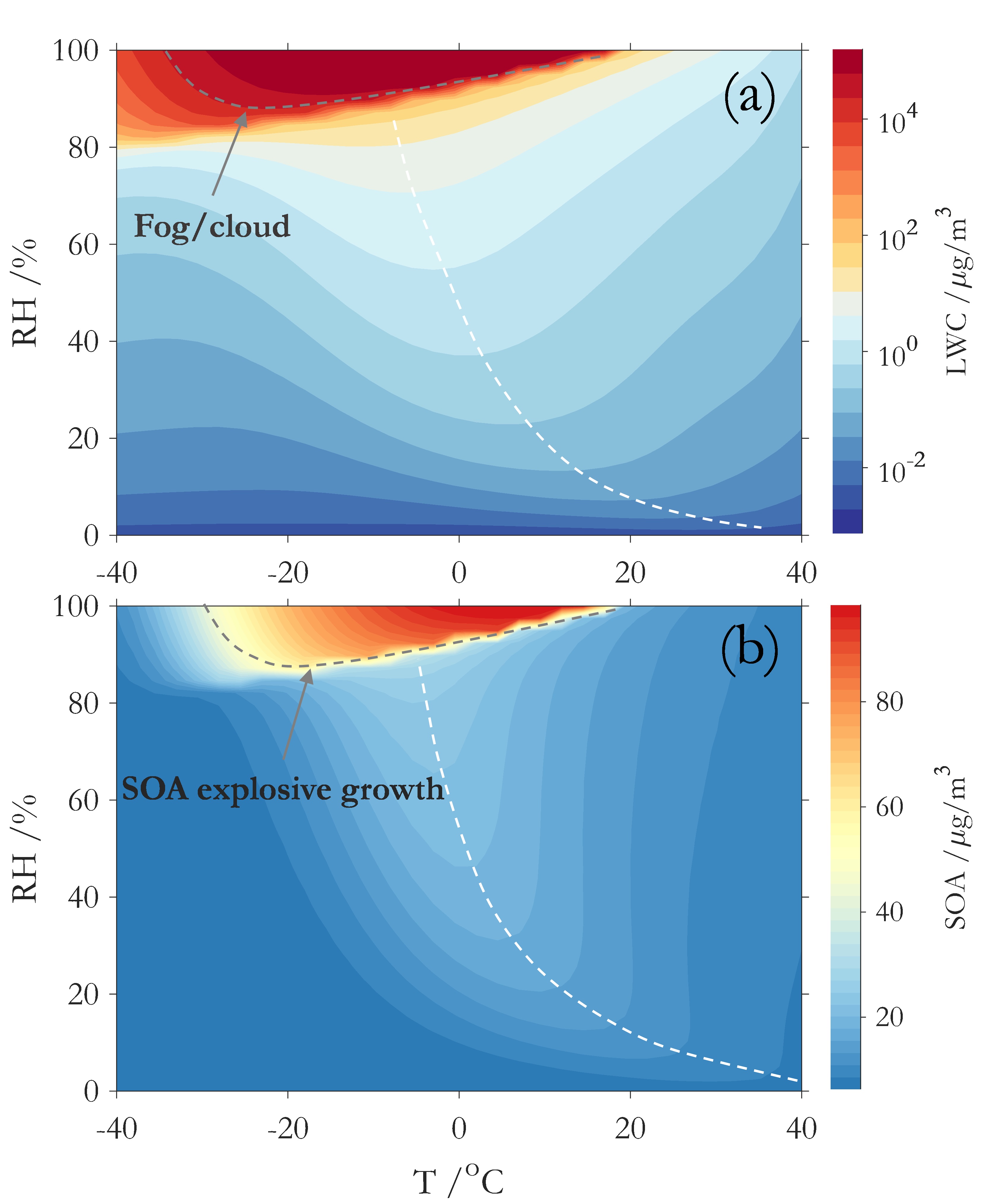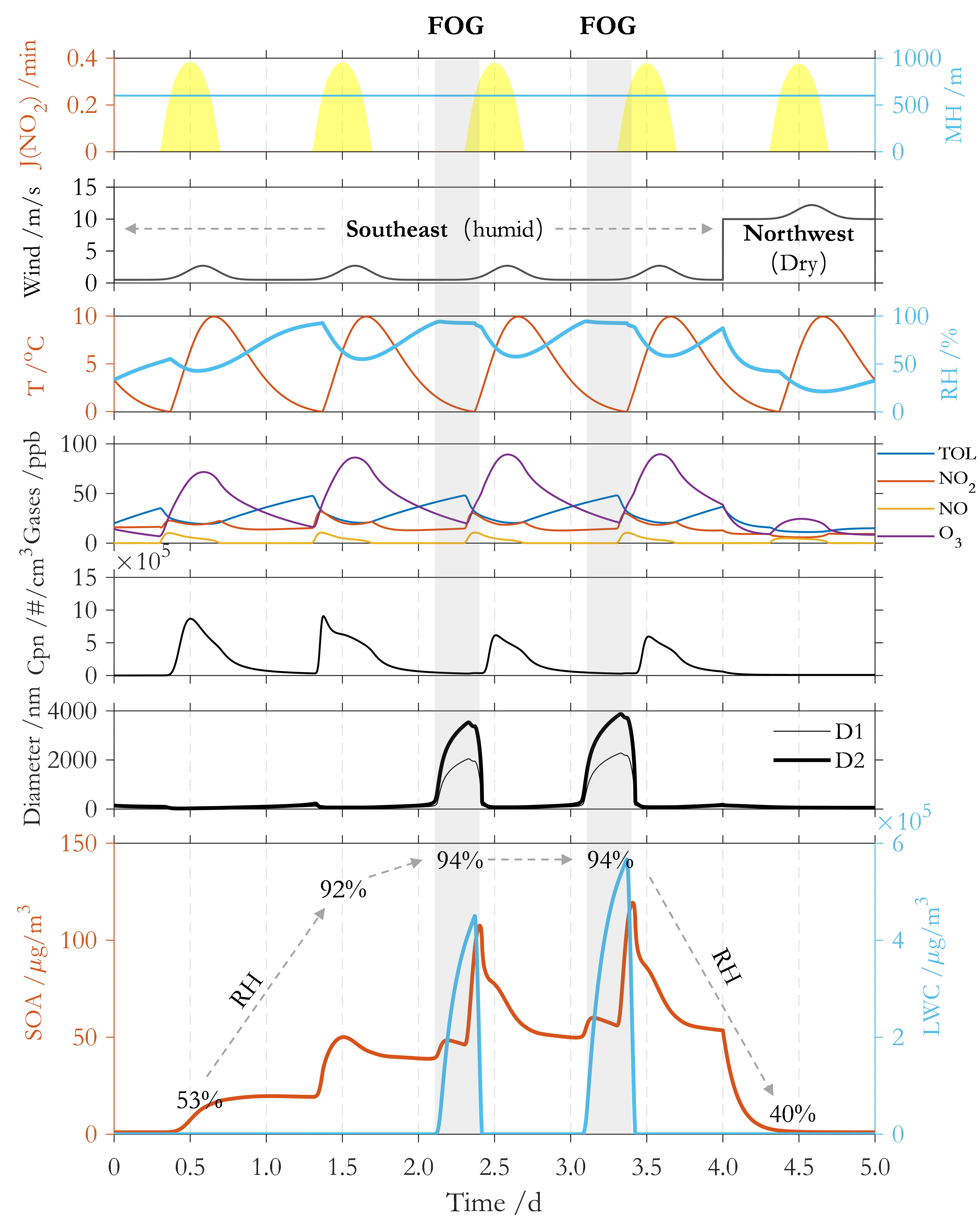
Secondary organic aerosol (SOA), an essential fraction of the fine particulate matter (PM2.5) in the atmosphere, greatly contributes to haze events. The properties of SOA are closely tied to aerosol-fog (or cloud) interactions and present the most significant uncertainties in climate models.
Haze-fog events frequently occur in China; however, the fundamental interactions between SOA and fog (or cloud) were not well understood for the following reasons: (1) Unlike nonvolatile inorganic salts, SOA is mainly formed by gas-particle partitioning; thus, organic vapors can also affect the hygroscopicity (or CCN activation) of SOA; (2) The role of water vapor in SOA formation under super-humid or supersaturated conditions is poorly understood due to the complexity of SOA (thousands of reactions and molecules); (3)Previous attempts to predict liquid water content in field studies were generally based on the thermodynamics models (e.g., ISORROPIA or E-AIM) using the inorganic aerosol composition, and the role of organic aerosol was overlooked; (4)To reveal SOA-fog interactions, we need online coupling of explicit chemical reactions with microphysical processes, which is one of the most challenging tasks as they all involve strongly integrated reactions and physical processes.
Benefitting from the most advanced mass spectrometer and an online coupled dynamic model (CSVA), researchers can investigate the interaction between SOA and fog with the influence of organic vapors (e.g., semi-volatile organic compounds, SVOCs) for the first time. To assess the effect of the aerosol-fog interaction on SOA formation in ambient conditions, researchers further placed CSVA in a Eulerian box skeleton (E-CSVA).
Results show that the presence of water-soluble organics could lead to the formation of cloud or fog droplets with relative humidity below 100 %; On the other hand, the condensation of water vapor can, in turn, drive SOA's explosive growth by partitioning of organic vapors. In particular, the researchers found that low temperatures can amplify organic vapors' influence on SOA explosive formation and CCN activation. This study well confirms that fog microphysics can profoundly influence SOA formation.

Coupled effect of temperature and relative humidity on LWC (a) and SOA (b) from toluene

The explosive formation of SOA is linked with the formation of fog (predicted by E- CSVA)
This research is investigated by scientists (Long Jia; YongFu Xu and MinZheng Duan) from the Institute of Atmospheric Physics (IAP) at the Chinese Academy of Sciences.
Jia, L., Xu, Y.F., Duan, M.Z., 2023. Explosive formation of secondary organic aerosol due to aerosol-fog interactions. Sci. Total Environ. 866, 161338. https://doi.org/10.1016/j.scitotenv.2022.161338
Jia, L., Xu, Y.F., 2021. A core-shell box model for simulating viscosity dependent secondary organic aerosol (CSVA) and its application. Sci. Total Environ. 789, 147954. https://doi.org/10.1016/j.scitotenv.2021.147954